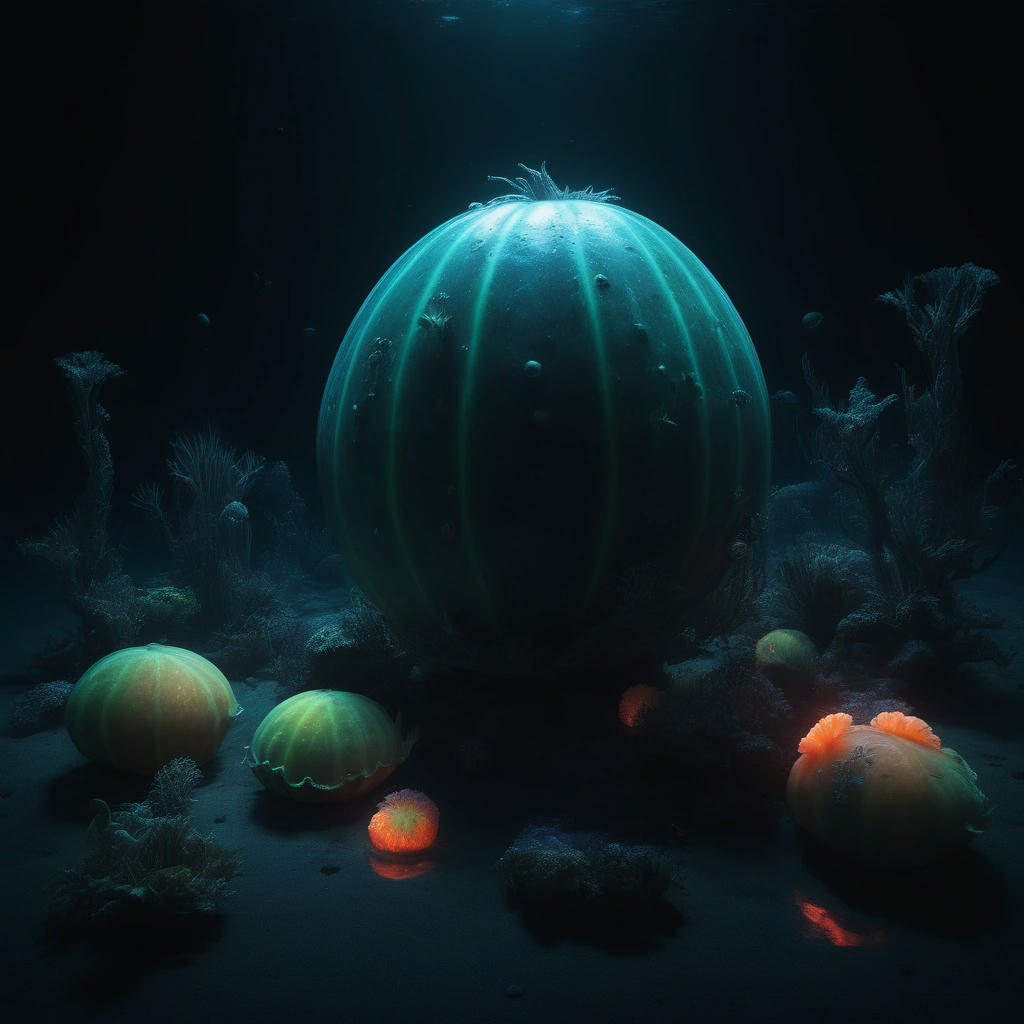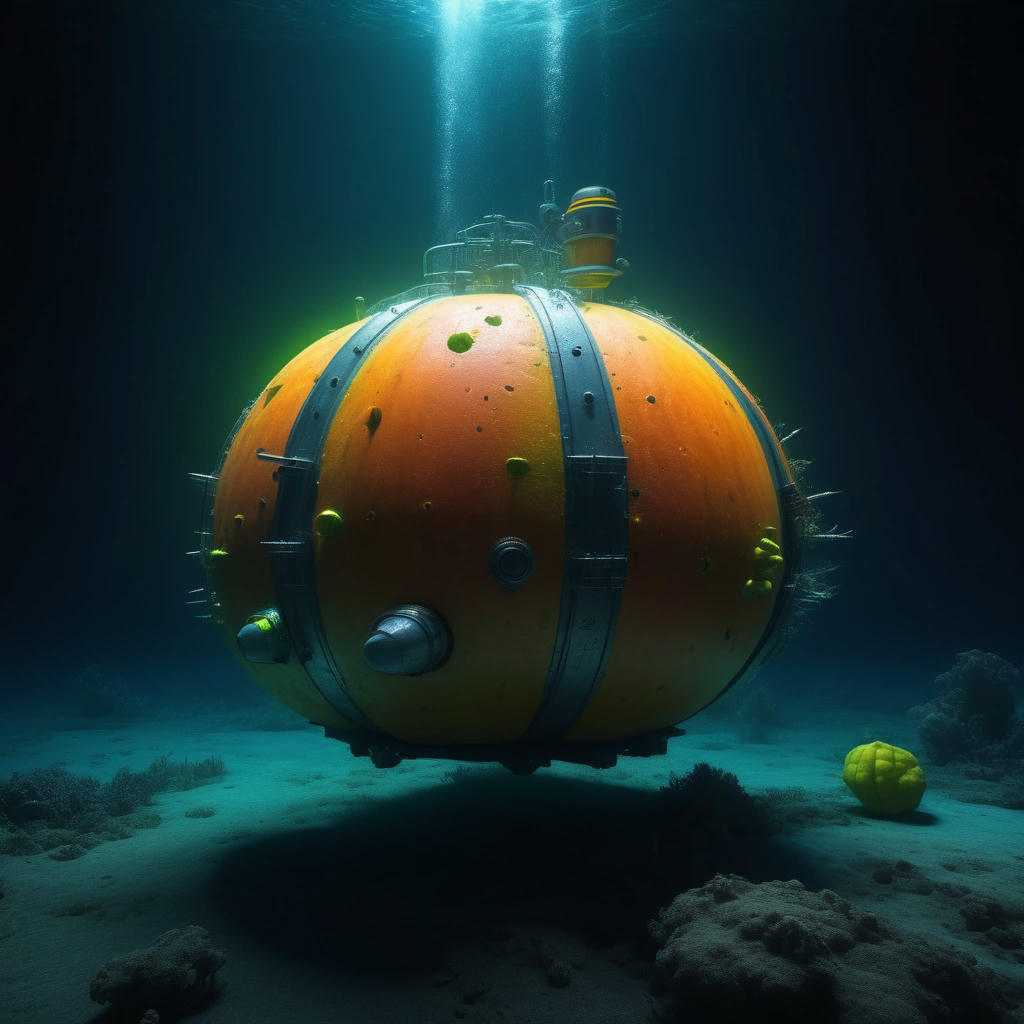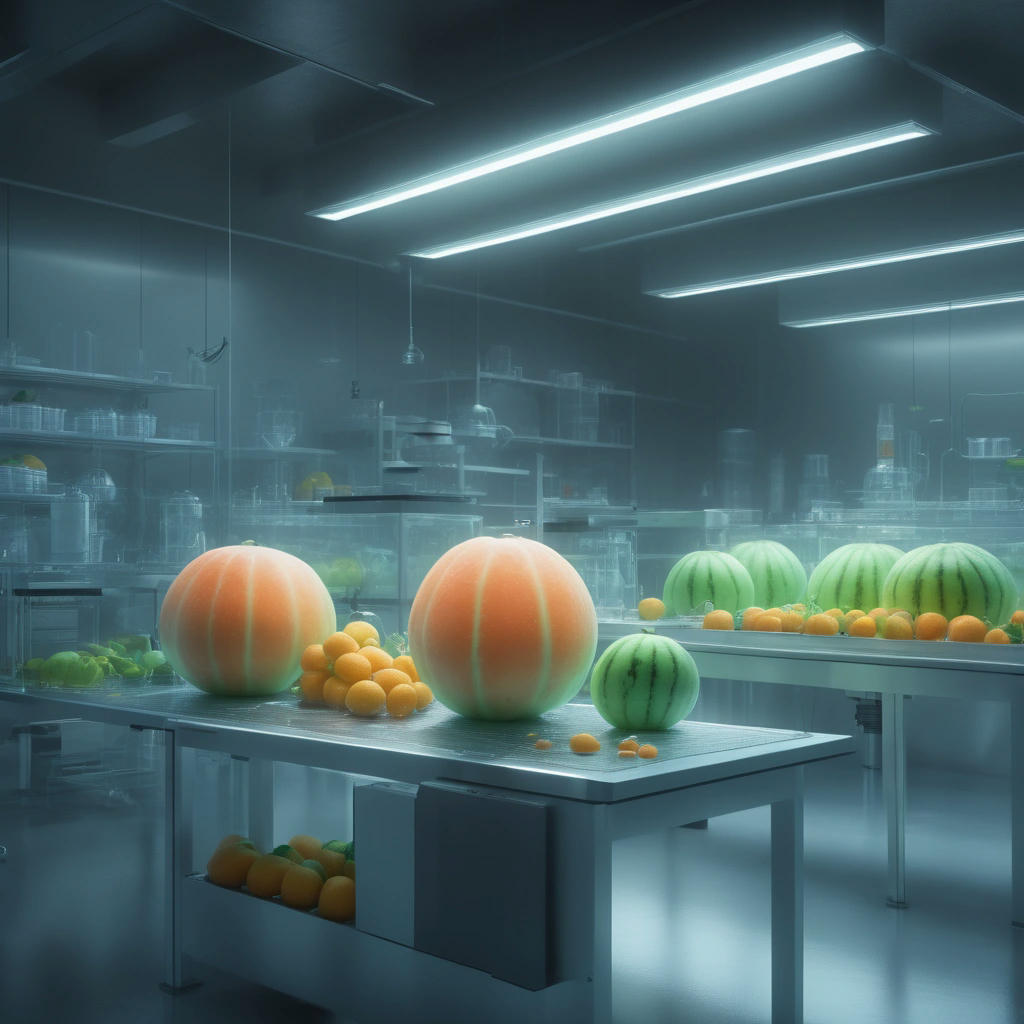In the dark depths of the ocean so wide, where the pressure's crushing and the darkness won't subside, lurks a terror, a horror of the sea—a fruit of doom, a melon of destiny. This is the story of the Abyssal Melon, a legend whispered among sailors and marine biologists alike, a tale that blurs the line between myth and reality.
The Legend Begins
The legend of the Abyssal Melon dates back centuries, to a time when sailors navigated the seas by the stars and the whims of the wind. Stories of monstrous creatures and enchanted treasures were common, but none were as peculiar or as terrifying as the tale of the Abyssal Melon. According to the lore, this mysterious fruit was said to grow in the deepest trenches of the ocean, nourished by the geothermal vents and the eerie bioluminescence of the abyssal plain.
The First Encounter
The first recorded encounter with the Abyssal Melon was by Captain Elias Marlowe, a seasoned mariner known for his daring expeditions. In his journal, dated 1783, Marlowe described a harrowing experience during a voyage through the Mariana Trench. His ship, the Sea Serpent, had been caught in a violent storm, and the crew was struggling to keep the vessel afloat. As the storm raged on, Marlowe claimed to have seen a strange, glowing object in the water.
Curiosity got the better of him, and he ordered his men to retrieve the object. What they brought aboard was unlike anything they had ever seen—a melon-shaped fruit, glowing with an otherworldly light. The crew was both fascinated and terrified, unsure of what to make of their discovery. Marlowe, ever the adventurer, decided to keep the fruit, hoping to study it further once they reached calmer waters.
The Curse Unleashed
As the days passed, strange occurrences began to plague the Sea Serpent. Crew members reported hearing eerie whispers in the night, and several fell ill with a mysterious ailment. The ship's compass spun wildly, and their navigational charts seemed to change on their own. Marlowe, determined to uncover the truth, cut open the melon, only to find it filled with a dark, viscous liquid that seemed to pulse with a life of its own.
The moment the melon was cut, the ship was beset by a series of calamities. A massive wave capsized the vessel, and Marlowe and his crew were plunged into the icy depths. Only a handful survived, and they spoke of a monstrous creature that emerged from the wreckage, its eyes glowing with the same eerie light as the melon. The survivors were rescued by a passing ship, but they were forever haunted by the horrors they had witnessed.
Scientific Curiosity
In the centuries that followed, the legend of the Abyssal Melon became a cautionary tale among sailors, a story to be told around campfires and in the dimly lit corners of taverns. However, it also piqued the interest of scientists and explorers, who were eager to separate fact from fiction. In the early 20th century, marine biologist Dr. Eleanor Hartley embarked on an expedition to the Mariana Trench, determined to find evidence of the elusive fruit.
Dr. Hartley's team used state-of-the-art submersibles to explore the depths, capturing footage of the strange and wondrous creatures that inhabited the abyss. After weeks of searching, they finally found what they were looking for—a glowing, melon-shaped fruit nestled among the rocks near a hydrothermal vent. Hartley was ecstatic, believing she had found the key to unlocking the mysteries of the deep sea.
The Melon's True Nature
Dr. Hartley carefully collected the fruit and brought it back to the surface for analysis. In her lab, she conducted a series of tests, hoping to understand the melon's unique properties. What she discovered was both fascinating and terrifying. The fruit contained a complex network of bioluminescent cells and a highly toxic substance that seemed to have a mind of its own. When exposed to light, the cells would react violently, emitting a blinding flash and releasing a cloud of toxic gas.
Hartley theorized that the melon was a defense mechanism, evolved to protect itself from the predators of the deep sea. However, she also noted that the fruit seemed to have a symbiotic relationship with certain deep-sea creatures, providing them with nourishment in exchange for protection. This discovery raised more questions than answers, and Hartley became obsessed with uncovering the melon's true origins.
The Abyssal Melon Today
Today, the Abyssal Melon remains one of the ocean's greatest mysteries. Despite numerous expeditions and countless hours of research, scientists have yet to fully understand the fruit's origins or its true purpose. Some believe it to be a relic of an ancient, long-extinct civilization, while others think it may hold the key to unlocking the secrets of the deep sea.
The legend of the Abyssal Melon continues to captivate the imagination of those who hear it, a reminder of the vast, uncharted depths that lie beneath the ocean's surface. Whether it is a harbinger of doom or a marvel of nature, the Abyssal Melon remains a symbol of the mysteries that await us in the dark, unexplored corners of our world. As we continue to push the boundaries of exploration and discovery, who knows what other secrets the ocean may hold?


